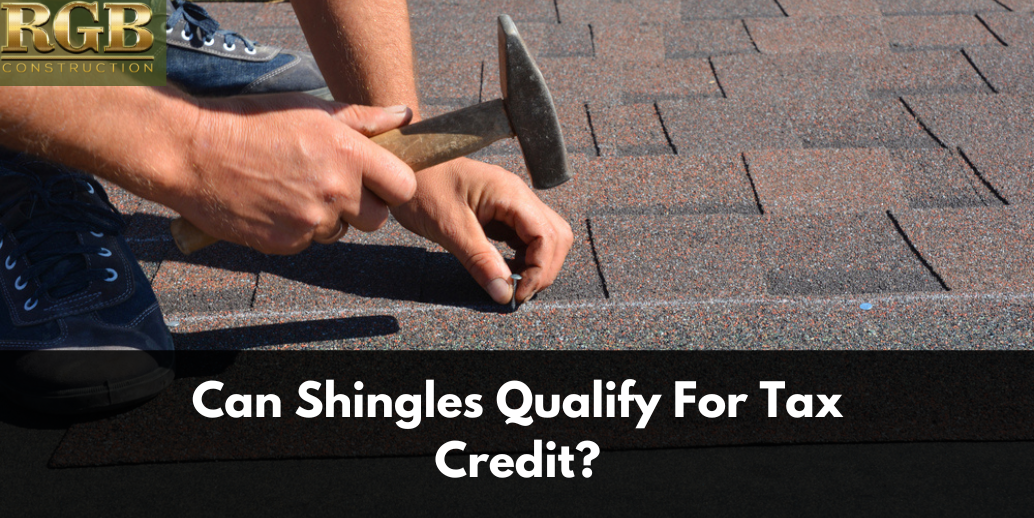Did you know that new shingles can qualify you for a tax credit? If you plan on replacing your roof because of its age or you truly need a new one, you’re looking at an expensive investment, so you want to save where you can. Imagine how much a tax credit could help!
There are benefits to today’s energy-efficient home improvement tax credit and the credit can be up to 10 percent of the cost. That doesn’t include any costs for installation, however, but you still can save up to $500. Here is the way you want to add the roof tax credit to your tax return, along with the different requirements to receive the credit.
What Is Included in The Federal Roof Tax Credit?
The tax credit includes information regarding Energy Star certified roofs that are made of metal and asphalt that have either pigmented coatings or cooling granules that decrease any gain in heat.
If you’re planning on a less costly roof replacement to save money, the tax credit stipulations may not allow for your changes. You don’t have to spend a lot on a shingled roof, but you’ll need to purchase the materials that go along with the energy-efficiency standards to get the tax credit.
Roof products that are certified actually throwback the sun’s rays and the roof’s surface temperature alters itself up to 100 degrees Fahrenheit. This decreases any heat that comes into your home.
In December of 2020, the tax credit was extended to run through December 31, 2021. The credit has gone through several extensions by way of legislation. An extended notice on this credit is found in Notice 2013-70 which includes a credit for alternative energy equipment. As of January 5, 2022, any further extensions and renewal of these credits are dependent on approval by Congress.
The tax credit includes the following stipulations:
- Tax Credit – 10 percent of the cost
- Amount of Tax Credit – 10 percent of the cost, up to $500 (Installation costs not included)
- Requirements – Metal roofs with the proper coatings that are pigmented, and asphalt roofs with the proper cooling granules. Both must meet Energy Star standards.
- Details – Your home must be one that exists and is your principal residence. Any new construction and rentals don’t apply.
- A Manufacturer’s Certification Statement – The statement is a document signed by the manufacturer certifying that the product qualifies for a tax credit. Any homeowner who meets the other requirements should keep a copy of this document for tax records.
Am I Eligible For a Roof Tax Deduction?
You are eligible if you meet the following requirements:
- Your residence must be your primary residence. You live there most of the year.
- Your residence cannot be a new home or a rental home.
- Your roof is either reflective asphalt or metal.
- Any roof coating is not eligible.
- A copy of the Manufacturer’s Certification Statement must be included to qualify.
The IRS extended the tax credits through December 31, 2021; however, you can still apply for the credit even if you had a roof replacement before 2021. If you were eligible and did not make a claim on your return, say in 2017, you can refile your tax return for the year in question to take advantage of the savings.
Can Shingles Qualify For Tax Credit?
The shingles that qualify for tax credit include Energy Star certified metal and asphalt roof shingles that contain coatings or cooling granules to reduce any heat gain. Certified roof products reflect more of the sun’s rays, which can lower roof surface temperature by up to 100 degrees Fahrenheit, decreasing the amount of heat transferred into your home.
Applying For Roof Tax Credit
Energy Star supplies some information about tax credits through information from their online site.
The IRS administers any direct tax credits. In order to apply for the tax credit, you can claim the credit using the following form number and submit it with your tax returns to the IRS. You can find instructions for the tax credit in IRS Form 5695, Residential Energy Credits.
What Does the Tax Credit Not Include?
A tax credit doesn’t include a new roof installed on a brand new home, though an emergency energy-efficient replacement roof would qualify when the installation occurs on your primary residence.
The tax credit doesn’t cover roof repairs. The federal government considers any repairs as expenses you’re currently incurring, which means the repairs are required to maintain your property. If you’re replacing a roof, they consider that a capital improvement and qualifies for a tax credit.
In addition, installation costs are not included in the tax credit.
It’s also critical that you select the right materials and options to qualify for the tax credit. You’ll want to purchase roofing products that meet the energy efficiency standards of the tax credit, as you want to be sure that a new roof is an energy upgrade. The tax credit pinpoints the improvement of energy efficiency in your home. You won’t receive the credit simply for installing a new roof.
You’re looking to replace your roof but you want credit for doing the right thing by installing an Energy Star rated product that’s eligible for a tax credit, but you want to know more about the process and whether you can claim it without updates or extensions to the Tax Credit law, which is to undergo congressional updates regarding shingles and applicable tax credits.
Conclusion
RGB Construction can help you with any changes that have occurred with the Tax Credit legislation, plus give you the roof you’ve been longing for to solve energy-related issues and enhance the looks of your roof and surrounding property. RGB is a veteran-owned and operated company that has a commitment to workmanship and integrity. Call us at 856-264-9093. We’ll help you understand any tax credit coming to you and help you evaluate your roofing needs.







